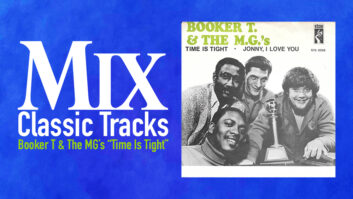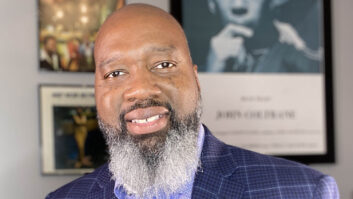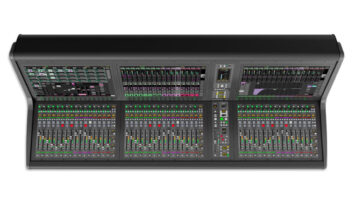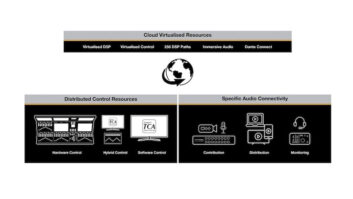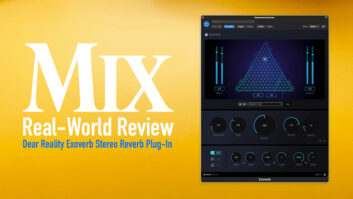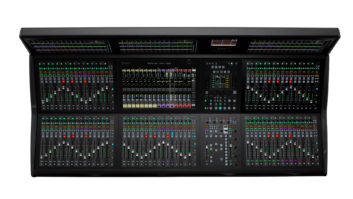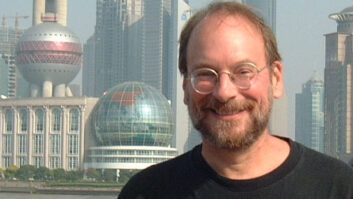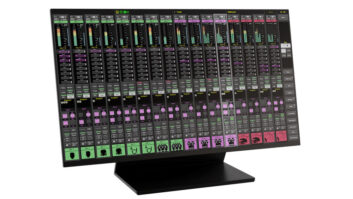A VISIT TO QUAD TECK DIGITAL/FDS LABSThe consumer rush to buy home theater systems and DVDs has been one of the great retail success stories of the past half-decade. Early prognosticators predicted a much slower ramp-up time, citing the chicken-egg syndrome: Hardware won’t sell without available software (i.e., DVDs), and software won’t be made available until there’s a large enough installed base of hardware. Well, the floodgates have opened, with hundreds of DVD titles available and countless more on the way as studios trip over themselves to put out catalog material – most of it in 5.1-channel surround sound.
How those older films are taken from mono or stereo to 5.1 surround has become increasingly important to the sound-conscious consumer. Some film studios are converting material in-house; others are relying on independent shops. One such facility that has been in great demand lately is Quad Teck Digital/FDS Labs of Los Angeles, founded by industry-veteran Hank Waring.
Waring has been in the recording industry professionally for almost 50 years, starting at age 16 for KFXM radio in San Bernardino. He built his first studio in a garage soon after, working with acts such as Canned Heat, Wee Five, Johnny Burret and many others. In 1959, Waring started in disc mastering at Capitol Records. From there, he went to Radio Recorders in Los Angeles, then to Century Records as the chief engineer of the mastering department. On July 1, 1964, Waring started his own mastering house in Hollywood called DCT Recorders.
In the early ’70s, Waring, with the help of his German engineering partners, started a research and development division known as FDS Labs. This R&D led to the development of FDS hardware systems for noise removal and signal processing for overall improvements in sound quality.
In 1974, Waring started the two-room Quad Teck Recording Studios in Los Angeles. Groups and artists that came to Quad Teck included Bob Marley, Gladys Knight, Los Lobos, Della Reese, Percy Faith, The Platters, The Olympics and many more. When the CD market hit, along with it came the need for noise removal and remastering from analog tape for CD release. Quad Teck did the cleanup work for The Beatles’ Abbey Road for CD release, as well as remastering for John Lee Hooker, Dukes of Dixieland, Bob Marley, John Lennon and many more.
Waring started cleaning up older movie soundtracks for BMG’s film division, UFA, and that brought in similar work on films from other companies. This led to a whole new FDS process that he and his German partners began to develop. Then came 5.1 surround. The FDS Labs’ system was updated to a 6-channel capability with 32-bit/96k processing, and the ability to put that information back into a 16-bit format without losing its 32-bit quality. The system’s ability to find missing pieces of music and effects that have been canceled out due to phase problems contributes a great deal to the sound it can achieve for 5.1 surround. The bells and whistles version of the FDS process is called “5.1 Plus 5” surround sound. This system creates a phantom between each of the five speakers in the surround field, resulting in a seamless surround environment without the need to sit in a designated “sweet spot.”
The film version of the Full Dimensional Sound (FDS) mastering system, which makes use of proprietary, custom-designed DSP chips, provides:
– 32-bit precision phase correction
– Phase-intelligent digital EQ, compression and limiting
– 16-bit overload digital bit repair
– FDS Labs’ noise shaping (dither) for 32-bit resolution in 16-bit CDs
– Jitter correction
“The key to our FDS process is its work in the time domain. All of our processors in the chain maintain CTC down to 5 to 15 picoseconds of jitter correction,” says Waring, referring to the units’ Constant Time Control. “In fact, many of our clients initially think we accomplish our dramatic results with equalizers; yet the fact is, we do very little EQ, with the bulk of the process involved in correcting phase and timing. Phase correction is a major part of the FDS process in bringing out the clarity and detail of instruments and voices that are sometimes deeply layered in the mix. Our processors can take standing waves out of the audio, revealing hidden clarity and ambience, even from monophonic recordings.”
Another major key to the FDS system is its “library” of over 100,000 “fingerprints,” as Waring calls them, of instruments and voices. “These are not `samples’ in the traditional sense,” Waring says.
The six-room Quad Teck/FDS Labs facility contains a custom Sony digital-mastering mixer, with a Tascam TM-D4000 and Tascam TM-D1000s used for level control. Signal stays at 24-bit/48kHz for film, 44.1k for DTS products and music remastering. The system is capable of receiving up to 40-bit/192k data.
Monitors were custom built for Quad Teck by Jay Lewis – Black Beauties model 3.0. Also used are Electro-Voice Sentry 100s. Amplifiers are Adcom GFA 7000 for monitors and BGW 300s on subs.
Engineers record to Tascam DA-38, DA-78HR, DA-88 and DA-98. The PCs run Sonic Foundry, Digidesign and SAWpro software packages. Hardware interfaces are Digidesign 888 and Digital Audio Labs (CardDelux and new T/DIF card); computer and tape machine interfaces are the new Tascam IF-AE8HR digital devices. The most recent update is the new DTS encoding software from Minnetonka. During our visit, Waring played – post FDS 5.1 extraction – an example of fireworks that were recorded in mono on a boat using a shotgun microphone. (This example is available on the company’s sample DVD.) Waring switched back and forth from the original mono recording to the post-FDS, 5.1 channel version, and you could feel the ambient reflections and reverberance of the long, waterway channel, presented spatially throughout the 5.1 soundstage! Waring says, “[The boat] was in a long, waterway channel about 500 yards from the fireworks. This is one of the dramatic examples of what FDS can extract from a recording. Those reflections and natural reverberation were in the recording, and it all depends on the recording. Sometimes the FDS system doesn’t do much, if anything at all. FDS cannot extract something if it’s not there.”
On my visit to FDS Labs, I brought my own mix, something I was familiar with. When first loaded through one of the FDS processors, it didn’t sound much different, maybe a little extra clarity. Waring said, “Relax, let’s have a bite of lunch while FDS fingerprints.” When we pressed Play after about a half-hour, the result was amazing. I purposely chose an alternative-rock project with heavy guitars and processing, even on the vocals. The drum kit behind all the guitars, vocals and effects had more punch, clarity and presence, while the guitars and vocals were still quite prominent.
We then listened to material with pre- and post-FDS comparisons in straight-stereo playback through two monitors. The results were natural and musical and almost as dramatic as the surround listening. Okay, we figured the FDS process must be doing some EQ and phase shifting, so we wanted to see what happened when we summed and listened in mono…not what we expected. The post-FDS material collapsed perfectly to mono, with the all of the clarity, presence and ambience improvements intact. The results were totally compatible from discrete 5.1 to Pro Logic to stereo to mono.
On the FDS Labs’ demo CD that we took back to the Conservatory where I teach, we immediately noticed that the phantom center information that Pro Logic “steers” to the center channel on the pre-FDS portion assumes an “in your face,” center-of-the-room position post-FDS. In addition, the post-FDS material has much greater clarity, presence and ambience. Off-center listening of some of the monaural material still maintains a center location, with the recovered ambience all around. Since we were monitoring the Pro Logic LCRS output through our console, any phantom center material was noticeably hot on the center-channel meter pre-FDS. The meters reflected our subjective listening, showing post-FDS more equal in level Left-Center-Right.
Listening to several examples of demonstration material on Waring’s DVD, it became obvious that many good recordings and soundtracks were done back in the ’30s and ’40s. The FDS system pulled some remarkable spatial effects from old soundtracks of Laurel & Hardy, Shirley Temple and a frighteningly good surround presentation of the original Frankenstein, starring Boris Karloff. Some of the most dramatic results were from monophonic recordings, like the Bill Haley and the Comets “Rock Around the Clock” example and the restored movie soundtracks.
While the FDS process will no doubt attract music clients with the impending release of DVD-Audio, it has primarily been employed on final movie mixes. When Waring receives original tracks with separate dialog, music and effects stems, the results are even more dramatic. I had the opportunity to hear comparisons of the final mixes on the recent release of The King and I, which was mastered at FDS Labs. When William Kidd, the conductor, heard the FDS results on the music, his comment to Hank was, “I was never totally satisfied with the way the music score was sounding during mixdown, and now [post-FDS], the music sounds exactly like what I heard on the soundstage.”
Waring has now remastered dozens of films for 5.1 DVD release, with companies such as Morgan Creek becoming regular clients. A few examples besides The King and I include The Chill Factor, Whole Nine Yards, Major League II and Battlefield Earth.
I use The Chill Factor in my Post-Production Audio classes at the Conservatory of Recording. The very beginning has a helicopter flying sequence that causes many students to duck from the realism of the helicopter starting in the surround channels and flying overhead. In my class, we mute the center channel during the laboratory sequences to hear some dramatic sound effects in the left, right and surrounds.
FDS can take an old soundtrack – stereo or mono – and produce 5.1 for DTS or Dolby Digital encoding. I have spoken with people at Hollywood Video (the second-largest DVD rental and retailer) who are experiencing more and more returns of purchased DVDs from customers dissatisfied with monophonic or 2-channel soundtracks when the box said “Dolby Digital.” With the availability of the FDS process, and those from other competitors, I can’t imagine that this will be a continuing problem. There is no reason that studio libraries can’t release all their titles with 5.1-channel digital surround.
FDS Labs will send their demo DVD to industry professionals on request.
